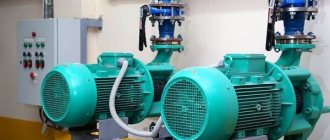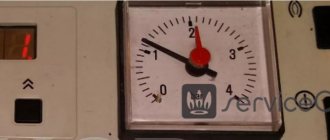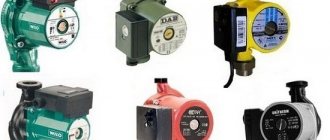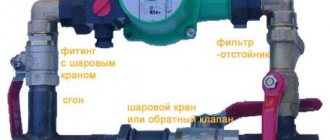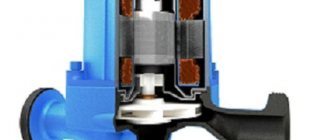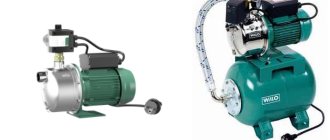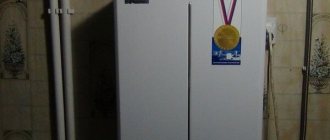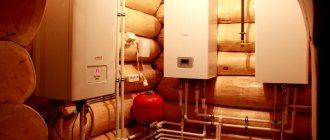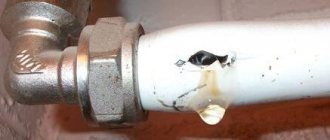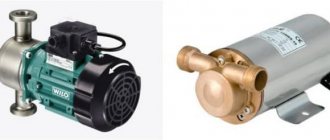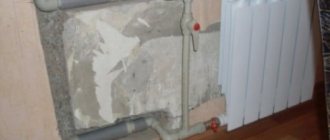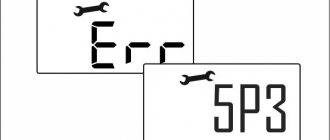The efficient functioning of the heating system in a cottage or country house is impossible without a circulation pump. Its uninterrupted operation guarantees that residents will be comfortable indoors during the cold season.
Circulation pump in the heating system
A heating circulation pump is considered reliable equipment that is easy to maintain. By following operating rules and performing timely preventive maintenance, you can minimize the likelihood of malfunctions. If malfunctions do occur, most of them do not pose a problem even for a technician with little experience. Repairing a heating circulation pump with your own hands is not difficult; it is enough to have general knowledge about the design of such equipment.
Dry and wet rotors
Units in which the rotor does not come into contact with the liquid during operation are usually called “dry”. They are able to withstand high loads. The main problem with models with this design is that their O-rings quickly become unusable. Although these parts are designed to operate for 3 years, they quite often fail long before the specified time.
The reason for rapid destruction is usually impurities, which are always present in one quantity or another in the coolant. Particles contained in the air around the boiler can also have a negative impact.
If the tightness of the device is broken, this will inevitably lead to a short circuit. Electrical elements fail, and repairing the circulation pump with your own hands in the event of such breakdowns is already extremely difficult, if not impossible.
Units with a “wet” type of rotor, for example, such as pumps from the German brand Vilo, are much more often used for domestic purposes. They are designed using a modular principle, and therefore are more reliable, easier to maintain and more repairable.
Important! If you carefully ensure that a working device does not operate “dry,” then the equipment will not fail for a long time.
Models of pumps with a “wet” rotor
Note! When purchasing a circulation pump, you need to check whether it can be repaired and whether the manufacturer supplies spare parts for this brand of equipment.
Heating circulation pump: device
Installing a circulation pump in a heating system
Owners of private houses usually give preference to economical, low-power pumps with a “wet” type rotor.
The operating principle of this unit is simple: the impeller, rigidly fixed to the electric motor shaft, rotates and draws in the coolant coming from the inlet pipe. Then, under pressure, it pushes it into the discharge pipe, thus ensuring circulation.
If we disassemble the pump with our own hands, we must have a good understanding of its structure.
Diagram of a circulation pump with a “wet” rotor
Important! It must be taken into account that in “dry” type models, the rotor and drive motor are separated into a separate unit, and the rotation is transmitted to the impeller using a clutch.
Positive and negative aspects of choice
Wet rotor circulation pump
Modern heating systems most often operate on the principle of natural circulation. But sometimes there is a need for forced circulation of the coolant. And then the question arises of choosing a suitable pump. The choice depends on many factors, the most important of which is the power of the device. It should be enough to generate the required feed intensity.
There are special mathematical formulas that allow you to make the necessary calculations. The finished tables are published on the Internet. They are also in the technical data sheet of the product. When choosing pump power, the area of the heated room and the speed that the circulation pumps are capable of generating are taken into account first of all.
By choosing Wilo products, everyone receives in return a whole package of operational benefits:
- German products eliminate the possibility of heat losses that often occur during evaporation.
- All its working mechanisms are made of corrosion-resistant materials.
- The operation of the system is controlled automatically. There is a built-in thermostat, and all functions are displayed on the LCD display. However, there is a manual switching option that allows you to control the speed of the working shaft.
- Even the most powerful models operate completely silently. Almost all Vilo pumps are small in size, so their installation does not take up much space.
- Connection is quick and convenient thanks to the spring terminals.
- The rotor and motor have a multi-stage protection system, so the unit is not afraid of power surges.
There is only one drawback to such installations. Today, Wilo pumps can only be installed in areas where power supply problems are extremely rare. Without electricity, it is simply impossible to evaluate the advantages and quality of work of German equipment.
Wilo surface pump
Many years of experience allows the German company Wilo to produce high-quality pumping equipment that satisfies the widest consumer demand. Today it is used both in the household sector and in industrial production. High quality and ease of installation, ease of operation and the presence of a large number of technical advantages distinguish the products of the described concern among similar products. But this is not the most important thing.
German pumps can be connected not only to the heating system. They are widely used for air conditioning. The model range is represented by several dozen varieties. All devices are characterized by high performance, compact size, high power and low noise during operation.
How to disassemble a circulation pump
Uninterruptible power supply for heating pump
Disassembling the circulation pump is carried out only after the device is disconnected from the network. The taps mounted at the inlet and outlet are closed to prevent water from entering the device. In some cases, it is removed from the pipeline by shutting off the bypass and connecting a backup pump. The heating system continues to function normally, and the technician can deal with the breakdown without haste.
Let's look at how to disassemble a water pump using the example of repairing a Wilo circulation pump.
First, remove the terminal box cover. To do this, unscrew the screw on which it is attached.
Inspect the contents of the box. How to check if the starting capacitors are working? They are called using a tester.
The performance of starting capacitors is checked using a tester
At the next stage, the “snail” is removed. Unscrew two screws located diagonally and separate the element from the electrical part of the pump (rotor and stator).
The internal surface of the dismantled device is inspected for the presence of deposits that form due to poor water quality. The rotor cartridge is picked up with a screwdriver and pulled out of the housing.
Disassembly of the pump is completed, access to all parts located inside the pump is provided. Now the parts of the device can be carefully inspected and cleaned. The modular design allows you to reduce repairs to replacing a failed unit.
The principle of operation of the circulation pump Wilo MTSL 15/5 HE - 2
The main part of the pump is an electric motor, consisting of a stator with several inductance coils to regulate the rotation speed, and a rotor, which is integrated on a shaft with bearings.
When power is applied to one of the stator windings, an electric field is created that drives the rotor with the turbine. The turbine blades capture fluid from the suction pipe and move it along the outlet pipe. In this way, the coolant circulates throughout the entire heating circuit.
Let's look at the main reasons leading to failure of the Wilo MTSL 15/5 HE - 2 pump.
Unstable voltage in the network
With reduced power, the pump motor slows down until it stops completely. With increased voltage, the inductor coils heat up, which can cause an interturn short circuit or burnout of the winding wire.
Contamination of pump mechanisms
When the liquid temperature is more than 60 ᵒC, scale may form on the turbine and shaft, which will slow down the rotation of the motor armature. Causes of pump jamming can also be increased oxidation of the driving mechanisms or the ingress of foreign objects.
Poor quality component material
If the pump uses parts made from low-quality materials, its service life is sharply reduced. For example, a shaft begins to jam due to the formation of a layer of rust on the surface of the bearings, because they are made of bronze, which contains iron. Such symptoms are typical for a non-original model.
Improper use of the device
Water through a working pump must constantly circulate at a certain speed. If the flow of the coolant is disrupted (the return or supply valve is closed, the system filter is clogged, etc.), the bearings and inductors in the device will overheat - this will lead to jamming of the rotor, breakage or short circuit of the stator winding.
The Wilo MTSL 15/5 HE - 2 circulation pump cannot be used when there is no water in the pipeline. But since Ariston double-circuit automatic units are equipped with liquid pressure sensors, the boiler will not turn on if there is no water in the system or its pressure is low.
Causes of circulation pump malfunctions
Uninterruptible power supply for heating pump
There are many reasons why the circulation pump may not work. For example, the presence of a large amount of suspended matter in the coolant can lead to malfunctions of circulation pumps. Small particles are deposited on the surface of the rotor, reducing the distance between it and the glass. Because of this, jamming occurs, leading to overheating and short circuit of the windings.
Wear and tear of the unit, operation in an unacceptable mode and a number of other factors lead to the need to replace some piece of equipment.
In cases of typical breakdowns, it is not difficult to repair the heating pump yourself. You can identify such problems by knowing their characteristic signs. This does not even always require disassembling the pump.
Common problems
For what reason might the circulation pump not work? Owners of electric heating pumps most often encounter the following problems:
- the shaft does not rotate;
- the device vibrates too much;
- pump operation is accompanied by uncharacteristic sounds or excessive noise;
- the equipment heats up;
- coolant pressure is below the standard value;
- The unit suddenly switches off.
Let's look at each of these situations in more detail.
Shaft blocking is determined by the following signs: after switching on, the pump hums, but the impeller remains motionless. This usually happens after a long period of equipment downtime due to oxidation of the shaft surface.
Inner surface of the circulation pump housing
Vibration of the device in most cases is caused by the fact that the bearing that ensures the rotation of the impeller blades has worn out. The noise may be caused by a clogged filter. Sounds uncharacteristic of pump operation are also a sign that there is air in the system.
A discrepancy between the coolant pressure and the standard value can be caused by a number of factors: violation of instructions when connecting a three-phase device; clogged filter on the suction line; increased viscosity of the coolant.
Heating occurs in cases where the pump operates in an unusual mode with a significant excess of the permissible load.
The pump in the heating system turns off some time after it starts working due to scale and deposits that accumulate on the inner surface of the stator. Incorrectly connected wires and oxidized fuse contacts can also cause malfunctions.
Troubleshooting Methods
The ability to avoid going to a workshop to repair the circulation pump will save money and time. But only if the owner of the device is able to determine the cause of the breakdown himself and knows how to disassemble the pump and replace the faulty part.
Our recommendations are designed to resolve simple problems. Attempts to repair the pump with your own hands in the event of a serious breakdown that requires qualified intervention can permanently damage the equipment.
Attention! The engine can only be dismantled after turning off the power supply and draining the water from the unit.
Shaft blocked
Dismantle the engine and inspect the shaft surface. If it has oxidized, then the shaft should be turned by pressing the screwdriver against the special notch of the rotor.
The body vibrates
To stop strong vibration, replace the bearings. The worn part is removed, and a new bearing is carefully driven into the seat using a wooden hammer. The size of the spare part can be clarified in the technical documentation supplied with the device.
The pump is noisy
The metal mesh mounted at the inlet of the pump is pulled out and thoroughly washed under running water. Then, without turning on the device, open the taps. Find a nut on the body designed to bleed air and unscrew it. After the excess air has been bled off and water has flowed out, the nut is tightened.
Attention! For uninterrupted operation of the system, it is necessary that air is removed in a timely manner in each area. It is recommended to install air vents that will perform this task automatically.
Removing air from the circulation pump
Weak pressure
In a three-phase pump, the first thing to check is whether the phases are connected correctly. If the rotation of the blades is performed in the desired direction, then pay attention to the cleanliness of the filter. The clogged filter is pulled out and washed.
Pump casing heating
The problem can be eliminated if you follow the operating rules of the device and do not exceed the maximum load specified in the documentation.
Switching off the unit after starting
Lime deposits that impede the movement of the shaft are removed. If the surface is clean, then check whether the phase wires are connected correctly. Oxidized contacts are cleaned.
Mechanical repair
All other parts that are not listed in the section: “Electrical repair” refer to mechanical components. If vibration or noise occurs in a running pump, to determine the source of its occurrence it is necessary:
- Stop the boiler smoothly.
- Remove the front panel of the housing and lower the control unit.
- Close the cold water, supply and return taps.
- Drain water from the boiler system through the drain valve.
- Unscrew the pump air vent lock to completely drain the water from the system. After all the fluid has been drained, tighten the lock until it stops.
- Remove the terminal with the starting capacitor.
- Unscrew the fastening screws and remove the motor-turbine unit.
- Inspect the bearings, impeller, and pump cavity for oxidation, contamination, foreign objects, and damage. If there is wear on the bearings or the motor shaft rotates with force, then they need to be replaced with others, for example, fluoroplastic ones. All dirt from the turbine, internal compartments of the housing, and sealing rubber should be removed.
- Place the repaired mechanism in place and secure it.
- Insert the terminal with the capacitor.
- Open the return, supply and cold water taps.
- Using the make-up tap, check the pump for leaks; if it does not leak, then add coolant to the system up to 1.2 bar.
- Start the pump in circulation mode and check its condition.
- If the results are positive, set the heating circuit temperature control knob to the required position.
The service life of the Wilo circulation pump and other boiler components can be extended if full maintenance is carried out before each heating season.
Prevention of circulation pump breakdowns
The equipment must be prepared in advance for intensive use during the cold season. Emergency repair of a heating circulation pump can cause a lot of inconvenience and lead to unplanned expenses. Prevention, to some extent, is a guarantee that the system will not fail at the most inopportune moment.
The pump in the heating system circulates the coolant
Careful owners perform the following activities before the onset of cold weather:
- check whether the device is installed correctly;
- renew the lubricant on the pipes and gaskets of the pump;
- clean the filter of the suction pipe;
- check how tight the connecting nodes are;
- Using a tester, they evaluate whether the device is correctly connected to the electrical network.
It is also necessary to conduct a test run to ensure that the equipment is working properly.
Owners of a house with autonomous heating need basic knowledge about the design and operating principle of circulation pumps. Any signs that the device is operating abnormally should not be ignored. After all, breakdowns in most cases are caused by improper operation. In order for the pump to function without failures, it is enough to regularly monitor the system throughout the heating season and carry out the necessary preventive maintenance.
To come in
Already registered? Sign in here.
There are currently 0 users on the page
There are no users viewing this page.
Modern circulation pumps require virtually no maintenance, and if a heating circulation pump needs to be repaired, it is better to entrust this task to a specialist from the service center. However, in order to prevent equipment breakdown, you can take some measures that will help prevent such an unpleasant event.
